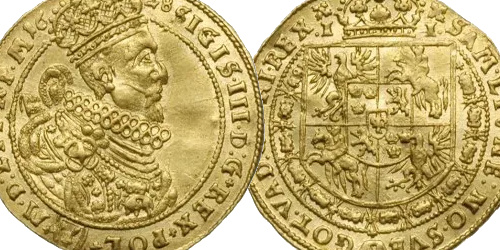A well-known but rarely noted typographical forgery that was not caught by the issuer.
The distinctive letter A in the series designation, slightly slanted and thinner.
The banknote carried a PMG certificate with a PMG grade of 58, so PMG experts did not catch the irregularity.
In August 1915, the General-Governorate of Warsaw was established in part of the territory of the Russian Empire occupied by the German army. On November 5, 1916, the Governor-Generals of both occupation zones issued the November 5 Act. By decree of December 9, 1916, the German occupation authorities established an issuing institution, the Polish National Loan Fund, which opened on April 26, 1917.
The PKKP was the issuer of the Polish mark divided into one hundred fenigs, whose rate was equalized with the German mark. Iron phenig coins and paper Polish marks were introduced into circulation. The Polish Republic, reborn in 1918, initially did not even have a substitute for its own treasury, so the Polish mark was recognized as a currency.
The reborn Polish state took over and polonized the PKKP. The stock of Polish marks printed in Berlin, inherited from the General Government of Warsaw, was fully allowed into circulation.
Banknotes with denominations ranging from 10,000 to 10,000,000 Polish marks illustrate the pace of Polish inflation in the first half of the 1920s. By mid-1922, the highest denomination was 5,000 Polish marks. In mid-September, 10,000 Polish marks were introduced into circulation. In early 1923, the Polish National Loan Fund issued 50,000 Polish marks. At the end of August, 250,000 Polish marks were put into circulation; in October, 500,000 Polish marks; in November, one-million-dollar banknotes were put on the market, and a month later, ten-million-dollar banknotes. At the same time, low-denomination banknotes were losing value. In 1923-1924, the lowest denomination that was in circulation was 50,000 Polish marks.
Banknotes of the time of inflation in Poland were designed in teams by full-time employees of the State Graphic Works. These denominations are characterized by impoverished graphic design and limited to the inscription layer. They are two-color banknotes with visible color demarcation. On most denominations, the decorations are guilloche ornaments and floral decoration.











